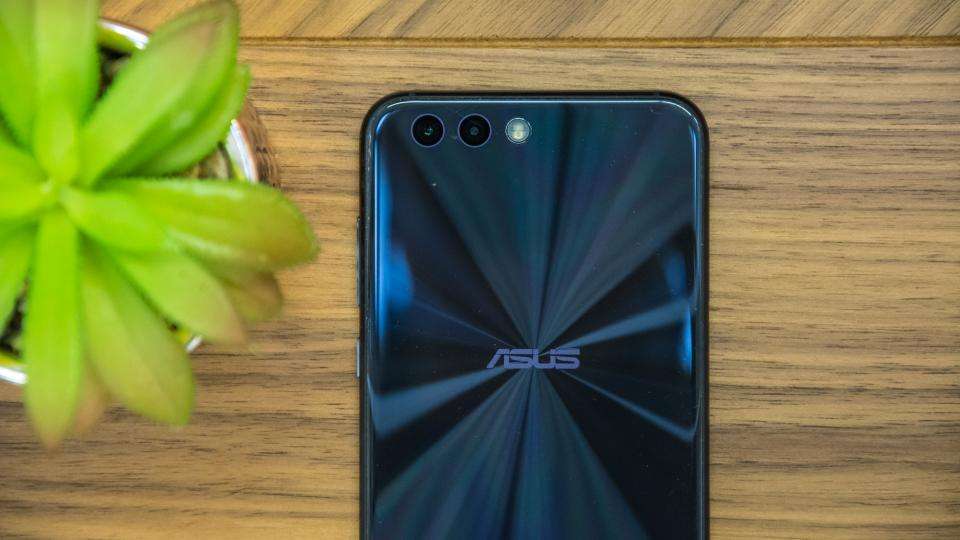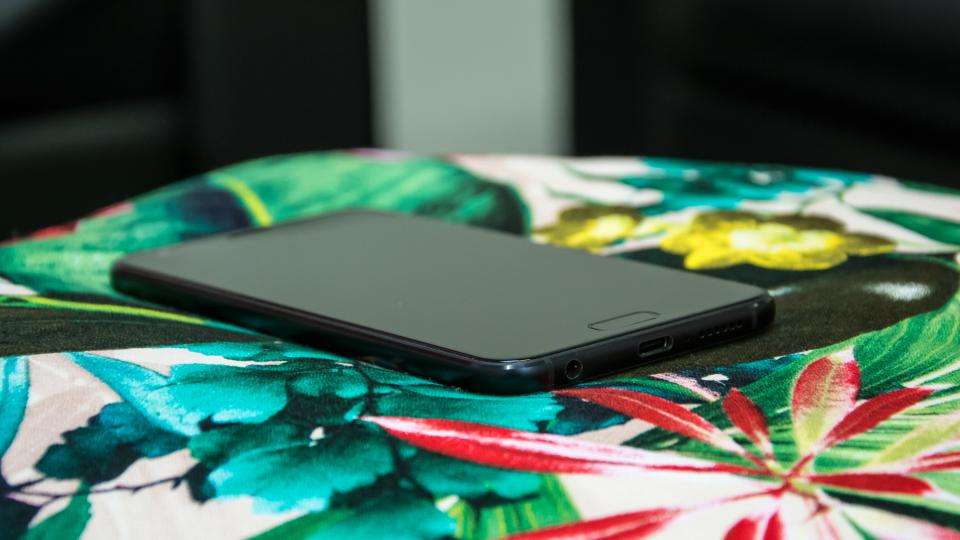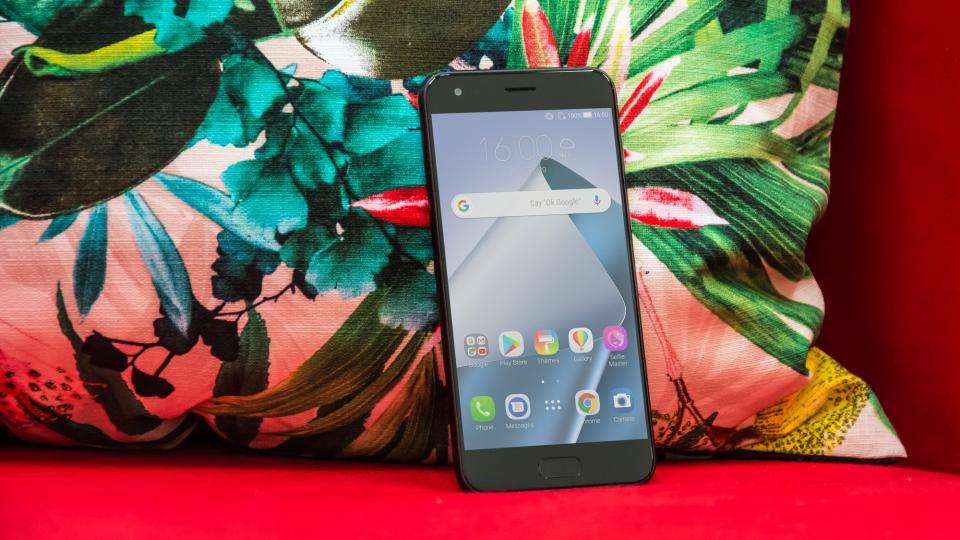Unlike the Zenfone AR , Asus’ Zenfone 4 is a much easier sell. The firm isn’t asking for wallet-wilting piles of cash and there’s no silly Augmented Reality gimmick haphazardly slapped on, either. It’s a refined, cheap(ish) smartphone, featuring Qualcomm’s fresh-faced mid-range processor, and a cracking set of dual-cameras on its rear.
Asus Zenfone 4 review: What you need to know
Asus’ Zenfone 4 is the firm’s latest mid-range smartphone. Designed to undercut flagships like Samsung’s Galaxy Note 8 and Apple’s iPhone 8 by a hefty margin, it takes advantage of Qualcomm’s latest mid-range processor - the Snapdragon 630 - and includes 4GB of RAM and 64GB of expandable storage.
READ NEXT: The best smartphones to buy in 2017
There’s a Full HD 5.5in IPS display on the front, complete with a pair of dual cameras on the back. Your main f/1.8 12-megapixel snapper sits next to an 8-megapixel, 120-degree wide-angle lens.

Asus Zenfone 4 review: Price and competition
The Zenfone 4 launches for £450. At that price, we’re looking at pinning it up against our current flagship-killing favourite, the OnePlus 5 (£450). The dual-cam Xiaomi Mi 6 (£340) is another top-notch mid-ranger to contend with - provided you can find one in the UK - and the £380 Honor 9 better watch its back.
Asus Zenfone 4 review: Design
From the front, Asus’ Zenfone 4 doesn’t look particularly special. Available in either “moonlight white”, “mint green” or “midnight black”, there’s nothing new here: simply picture what a bog-standard smartphone looks like in 2017, and you’re on the right track.
The Zenfone 4’s front is dominated by the phone’s IPS LCD display. Both the power key and volume rocker key sit on the right edge of the phone, while the dual microSD (expandable up to 256GB) and nano-SIM tray can be found on the left edge.

Cast your eyes downward, and you’ll spot a 3.5mm headphone jack, USB Type-C charger and solitary speaker grille on the bottom. The large home button just under the screen does double duty as a fingerprint scanner, but there’s one feature that’s sorely missed: dust- and water-resistance. Mind you, the OnePlus 5 doesn't have this either.
Asus Zenfone 4 review: Display
Rather than going down the ultra-high-resolution route, Asus keeps things simple, with a 5.5in 1,920 x 1,080 IPS display. There’s nothing out of the ordinary here, but its display quality isn't as great as I’d hoped.

Contrast is up to snuff, with eye-popping images and plenty of detail, while maximum brightness hits a dazzling 614cd/m2. On the other hand, colour balance and accuracy aren’t quite so good, with colours looking a touch over-saturated across the palette, even in the Zenfone's “balanced” colour mode.
Asus Zenfone 4 review: Performance and battery life
Asus’ Zenfone 4 is powered by Qualcomm’s latest 2.2GHz Snapdragon 630 processor, with 4GB of RAM and 64GB of storage, expandable up to 256GB via microSD. It also runs Android 7.0 Nougat, with an update to Android 8.0 Oreo promised in the near future.
The Zenfone 4’s performance is no slouch, but I definitely expected better. Pitched against its similarly-priced rivals, it loses out in both CPU and GPU performance. It isn’t the fastest mid-range phone – not by a long shot – but general performance is smooth enough and it should be able to at least keep up when zipping in and out of applications.
In our battery life test, with the display set to our standard 170cd/m2 brightness, the Zenfone 4 lasted 13hrs 26mins. For reference: that bests the Honor 9’s 11hrs 36mins, and almost reaches the longevity of the Xiaomi Mi 6, but it's a long way behind the OnePlus 5's result of 20hrs 40mins.
Asus Zenfone 4 review: Camera
While both the OnePlus 5 and Xiaomi Mi6 opted for a 2X telephoto lens as their secondary cameras, the Zenfone 4 takes a different approach. As with the LG V30 and the LG G5 before it, the Asus Zenfone 4's secondary camera is a wide-angle effort.
We’re treated here to a regular 12-megapixel f/1.8 main camera, which works in tandem with an 8-megapixel camera to its right which has a 120-degree angle of view. This allows you to squeeze more of your scene into the frame, which is great for shooting landscapes and group shots in tight spaces. Alas, only the main camera benefits from optical image stabilisation (OIS).

After putting the Zenfone 4’s rear cameras properly through their paces, I was left impressed, but there are a couple of issues that hold them back. Shots did look crisp and detailed, especially with plenty of light and even intricate brickwork and foliage was picked up nicely, with an abundance of detail. Colour reproduction might not be quite so good as the OnePlus 5's main snapper, but this is still a great camera for photography enthusiasts on a budget, with the 120-degree wide-angle lens adding a lot to the picture, too.
Its issues meanwhile, are to do with low-light and HDR. Switch on the latter, and images looked washed out, with overly white foregrounds in particular. Be sure to veer away from HDR as much as possible. Shots taken in low-light weren't particularly special either, with a noticeable amount of noise and signs of compression artifacting.
Asus Zenfone 4 review: Verdict
Asus seems to have done enough with the Zenfone 4 to earn a spot in your pocket. While the Zenfone AR was too expensive and surprisingly underpowered, the Zenfone 4 halves the asking price while delivering a decent set of dual rear cameras.
But the Zenfone 4 faces stiff competition. The OnePlus 5 is still our favourite flagship beater, and its affordable dominance will be difficult to upheave. Likewise, the dual-cam Honor 9 and Xiaomi Mi 6 can be picked up for much cheaper and both also have dual camera setups.
The Asus Zenfone 4 will be available to preorder from 6 October 2017 for £450 from Amazon and Carphone Warehouse.
|
Hardware |
|
Processor |
Octa-core 2.21GHz Qualcomm Snapdragon 630 |
|
RAM |
4GB |
|
Screen size |
5.5in |
|
Screen resolution |
1,920 x 1,080 |
|
Screen type |
IPS |
|
Front camera |
8-megapixel |
|
Rear camera |
12-megapixel, 8-megapixel |
|
Flash |
dual-LED |
|
GPS |
Yes |
|
Compass |
Yes |
|
Storage (free) |
64GB |
|
Memory card slot (supplied) |
microSD |
|
Wi-Fi |
802.11ac |
|
Bluetooth |
5.0 |
|
NFC |
Yes |
|
Wireless data |
4G |
|
Dimensions |
155.4 x 75.2 x 7.7 mm |
|
Weight |
164g |
|
Features |
|
Operating system |
Android 7.1.1 |
|
Battery size |
3,300mAh |











